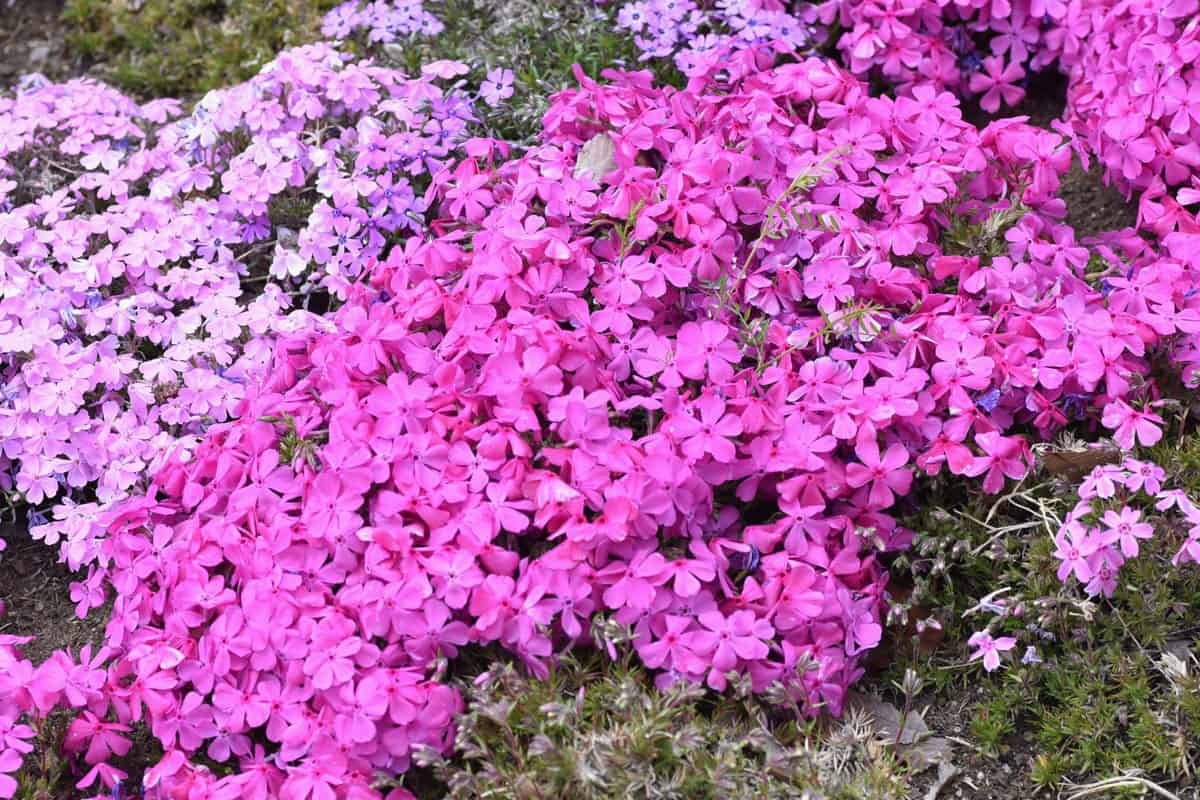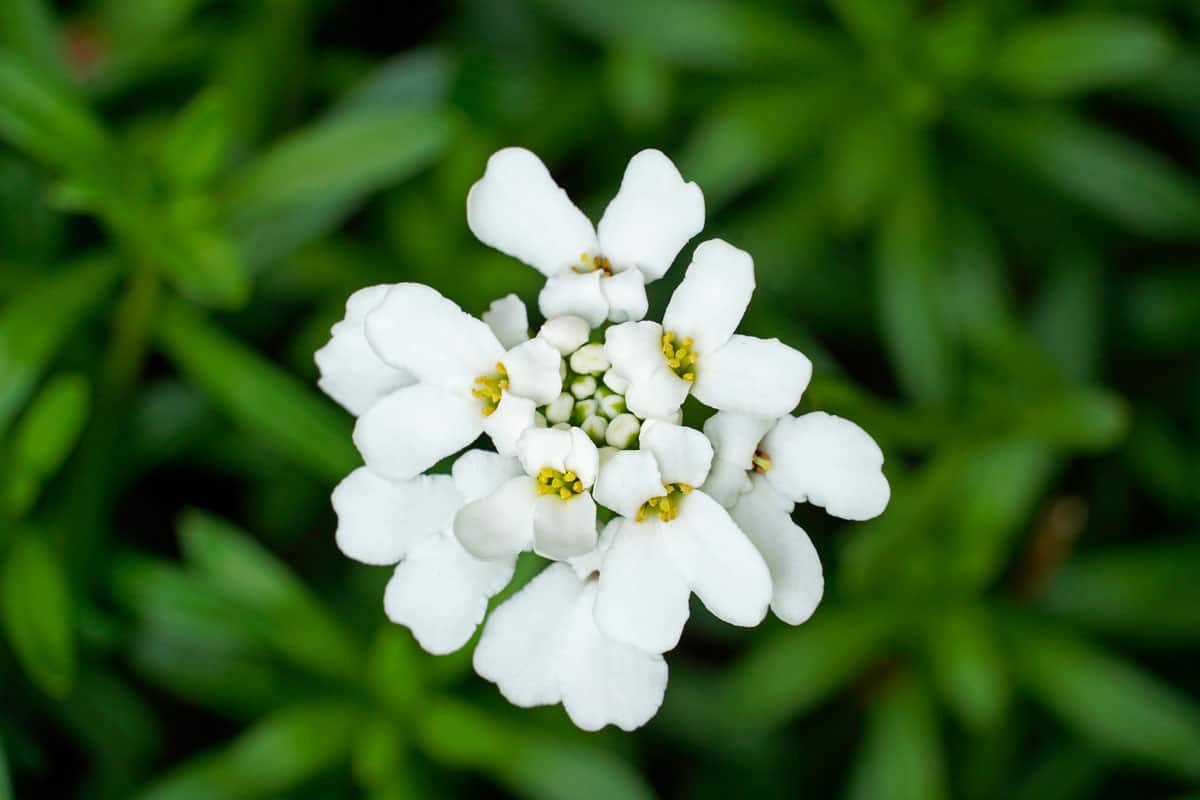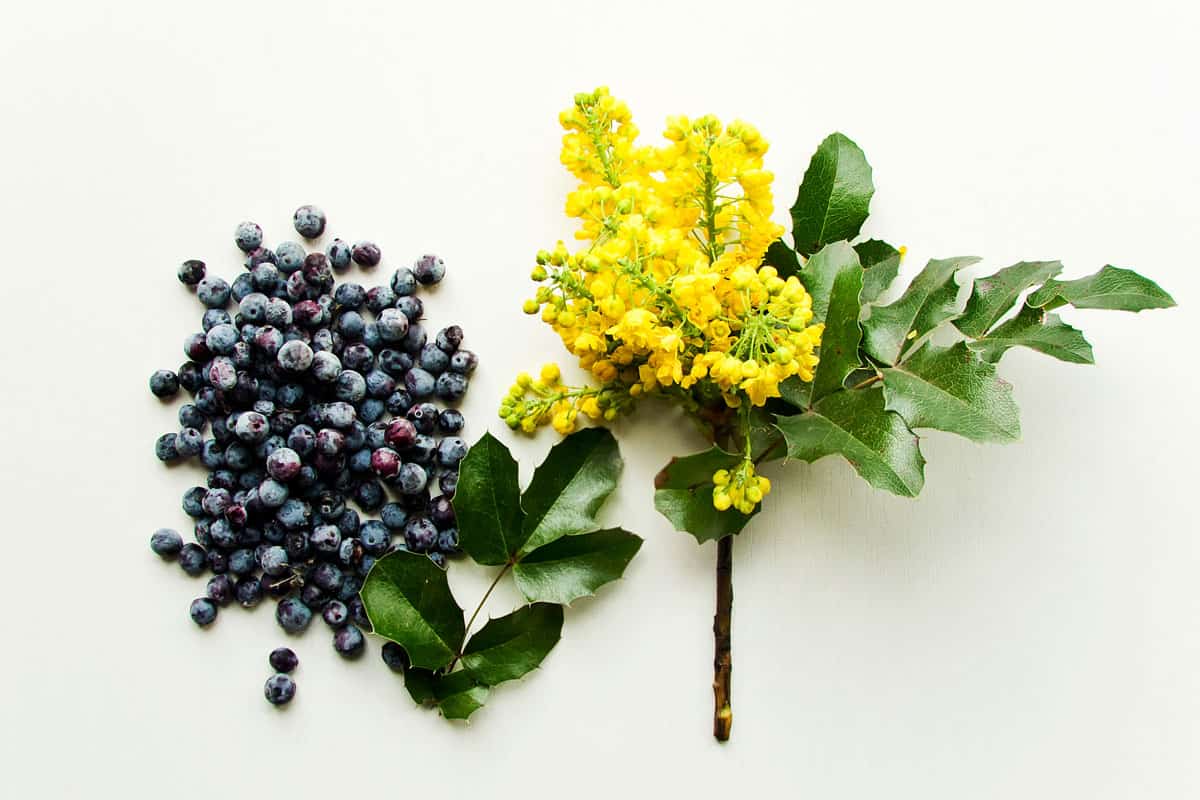Flowers are one of nature's beautiful gifts, so gardeners love designing gardens with colorful varieties. Unfortunately, the beauty fades when the blooms drop off and the leaves begin to die. Incorporating evergreen flowering shrubs ensures that your garden maintains a consistent green look year-round.
Flowering evergreen shrubs are a great addition to landscaping projects because they provide color during the flowering season while keeping their lush green leaves year-round. Below is a list of 15 popular varieties that you should consider adding to your garden:
- Laurustinus
- Mountain Laurel
- Winter Heath
- Creeping Phlox
- Evergreen Candytuft
- Kaleidoscope Abelia
- Japanese Pieris
- Camellia
- Daphne
- Gardenia
- Oleander
- Chinese Quinine
- Rhododendron
- Oregon Grape
- Creeping Myrtle
This article will give you information about various types of flowering evergreens to help you decide which varieties might be suitable for your garden space. Please keep reading to learn more about the types we have chosen to highlight.

What is a flowering evergreen shrub?
A flowering evergreen shrub is a plant in which the greenery remains vivid year-round. However, these types of shrubs have the added benefit of flowering blooms, which provide additional color and beauty during the spring and summer seasons.
As with most plants, you need to plant them in the appropriate USDA plant hardiness growing zone for them to thrive. Growing these shrubs outside the listed growing area may cause the shrub to be semi-evergreen which means the leaves will dry out, turn brown, or fall off during certain seasons.
In addition to knowing the correct grow zone, soil pH and sun tolerance are also essential to ensure your flowering evergreen grows. Included below for each flowering evergreen variety are facts about optimal growing conditions.
Laurustinus

Laurustinus is a Mediterranean shrub with pink or white blooms and shiny blue berries. It is one of few winter-blooming plants.
It's a relatively easy shrub to grow and requires little pruning. Resist the temptation to deadhead the plant because doing so will prevent the plant from bearing its beautiful berries.
It grows in full sun or dappled shade and prefers neutral or slightly acidic soil. Laurustinus likes moist soil but is drought tolerant once established. It is deer resistant, which many gardeners find to be a huge perk.
Zone = 8-10
Mountain Laurel

The Mountain Laurel shrub has beautiful bell-shaped flowers, often white or pink, with purple dots or streaks. The greenery has a deep look with a beauty of its own.
Mountain laurel is an attractive option for gardeners who do not want to do mass amounts of maintenance. It grows slowly but reproduces easily since each plant can produce thousands of seeds.
Mountain laurel prefers acidic soil and can grow to the size of a small tree under the right conditions. It also grows well in shaded areas. All parts of the shrub are toxic if ingested, although likely nonfatal, so be cautious where you plant it if you have animals that have access to your garden.
Zone = 5-9
Winter Heath

Winter heath, or Erica Carnea, commonly referred to as heather, is a flowering evergreen that reveals its beautiful purple and magenta blooms during winter and early spring, making it popular for ground cover.
Winter heath prefers full sun and acidic dirt that can quickly drain. It can take 2-3 years for the plant to become fully established, so you want to ensure it has plenty of water and the proper soil pH during those first couple of years.
Zone = 5-7 [also 3 and 4 with added protection]
Creeping Phlox

Creeping Phlox is a beautiful ground cover plant that flowers in pink, purple, or white. It prefers full sun and becomes drought tolerant once planted. It is also deer and salt-resistant.
Creeping Phlox is a very hardy plant that requires little care and seems not to have a specific soil pH preference so that it can grow in many places. Occasional shearing encourages growth when trying to cover a large area.
Zone = 3-9
Evergreen Candytuft

Evergreen Candytuft is a woody white or pink flowering plant. Candytuft is typically used as a ground cover plant because it is the perfect height to cover the bare stems of flowers.
It needs full sun and alkaline soil to thrive, but it may grow in acidic soil with additives. It can survive droughts and reseeds itself, so it's an excellent plant to just set and forget for a beautiful garden.
Zone = 5-9
If you have acidic soil, consider using Down to Earth garden lime.
Kaleidoscope Abelia

This species of abelia has beautiful color-transitioning leaves and small, fragrant white flowers. It is a very low-maintenance plant since it is frost resistant, drought resistant, deer resistant, and heat tolerant.
Kaleidoscope Abelia is a semi-evergreen because outside of its recommended growing zones, it may lose its leaves, but it will retain them within the growing zones. It is adaptable to different soil types and thrives in full sun to part shade.
Zone 6-9
Japanese Pieris

Japanese Pieris, or Japanese andromeda, shrubs produce bell-shaped pink or white flowers. Japanese Pieris resembles a lily-of-the-valley flower, which is why it is often called the lily-of-the-valley bush.
The shrub grows in partial to full sun and prefers acidic soil. It is toxic to humans and pets when ingested.
Zone = 5-8
Camellia

Camellias are beautiful shrubs with plenty of variety. There are six recognized flower forms with colors including red, pink, and white.
Camellias thrive in acidic to neutral soil and part shade or dappled sunlight. Little pruning is needed except to remove dead or diseased branches.
Zone = 6-9
Daphne

Daphne shrubs produce pink or white, tubular-shaped flowers.
The shrub is evergreen in warmer climates but may lose its leaves in colder climates. Daphnes prefer slightly acidic soil and part shade conditions.
The shrubs are easy to care for once established but do not transplant well. The Daphne shrub naturally forms into a round shape, so little pruning is required to keep it looking great.
Zone = 4-9 [but only semi-evergreen in zones 4 and 5]
Gardenia

Gardenias are perfect for experienced gardeners who are not intimidated by challenging plants. However, their beautiful white flowers and amazing scent compensate for the amount of effort required to maintain them.
Gardenias grow best in acidic soil with partial shade. A spot shaded during the hottest part of the day makes the perfect location for a Gardenia to thrive.
Zone = 7-11
Oleander

Oleander shrubs are perfect for hot, dry conditions because they can withstand droughts and grow best in full sun conditions. In contrast, they can tolerate temperatures as low as 20 degrees Fahrenheit. The plant's flowers come in yellow, white, red, and pink.
Overall, the plant is very adaptive and requires little care once planted. It grows in most soils, but it does prefer alkaline soil. Be cautious with this plant in your garden because it is toxic if ingested.
Zone = 8-11
Chinese Quinine
Chinese Quinine, also known as the Blue Evergreen Hydrangea, is a beautiful plant that is also used for medicine in some cultures.
The plant's flowers are different colors depending on the pH of the soil, ranging from a dark blue where there is acidic soil to a gorgeous lilac where the soil is more alkaline.
This plant thrives in shaded gardens but doesn't like extreme conditions when it comes to water. Conditions that are too moist or too dry can damage the plant.
Zone = 7-9
Rhododendron
Rhododendron bushes have many variations, including beloved azaleas, making them a perfect fit for any garden. Their blooms can have a bell, funnel, or tubular-shaped flower clusters. The plentiful color options allow them to be a statement piece in the spring, then a vibrant green in the cooler months.
They grow best in acidic soil and filtered sun, although some newer varieties have higher sun tolerance than older ones.
Zone = 3-9
Oregon Grape

The Oregon Grape shrub has something for everyone. It provides small yellow flowers during the spring, edible berries in the summer, and greenery during the colder months. The plant's berries attract birds for a wonderful display of wildlife.
The Oregon Grape Holly grows best in partial to full shade and acidic soil.
Zone = 5-8
Creeping Myrtle

Creeping myrtle, also commonly referred to as periwinkle, makes a great ground cover. The bluish purple flowers contrasted against the dark green leaves are a beautiful sight.
It will grow in acidic, neutral, or alkaline soil and prefers shaded areas.
Zone = 4-8
Is soil pH difficult to change?
If you want to grow a particular type of flowering evergreen, but your soil pH isn't the type needed, you may be able to alter it using additives. Acidic soil typically has a pH level between 4-6.5, while alkaline soil has a pH level above 7.
First, if you arent' sure about the pH of your soil, you can test it to find out what type you have in your garden. Once you know if your soil is alkaline or acidic, then you work toward adjusting it by adding products like sulfur and lime.
If you need to test your soil, consider this soil test kit by Luster Leaf.
Conclusion

Suppose you want plants in your landscaping that give you the benefits of year-round greenery and the pop of color that flowering plants offer. In that case, you should not hesitate to add a variety of flowering evergreen shrubs to your landscape plan.
For more landscape information that includes evergreens, read 16 Fast-Growing Evergreen Shade Trees.
Also, consider reading 15 Low Maintenance Evergreen Shrubs For Your Garden.


